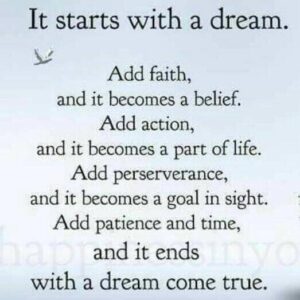In a world that has become increasingly connected, the challenge is to cope with information overload. However, a bigger challenge is to filter fact from fiction, truth from lies, news from propaganda and making peace with diverse viewpoints. There is an acute need to cope with both these challenges of information overload and the complex nature of the messages, partly to make informed choices but equally importantly to retain our emotional wellbeing.
Information overload can in large measure be controlled, by minimizing the number of medium of communication that we access. The number of messages reaching us can also be minimized by using appropriate filters. However, once a message reaches us, in most cases we cannot but help going through it. This poses the real challenge to individuals when the message does not confirm to our expectations. Very often it triggers emotions upheaval within us. Not only does the message irritate or infuriate us, but often it also arouses in us negative feelings for the contents, the person sharing it and disturbs our emotional balance. Over a period of time, messages that are true but do not sync with our views are cast aside without a proper evaluation merely because we are emotionally charged and emotionally biased. The two most polarizing issues in messages are related to politics and religion.
The mushrooming of the varied types of media, the innovative style of content and messaging, the diverse distribution channels and the speed of distribution have made communication both exciting and complex. This coupled with the emergence closed group communication networks and mass scale message bombardment have resulted in trolling, counter trolling, spread of disinformation. If the message meets our expectations we are happy (even if the message is untrue) but if we dislike the message (even if true) we are upset, irritated, angry, and provoked. The consequences of such emotional and mental euphoria or disturbance triggers our response. Most times we get charged up and then simply pass it on to those who we feel will welcome such messages or we simply ignore the message. At other times we add fuel to the fire but quickly adding more comments or engage in a war of words. While our response to each message is individual specific, what is not really apparent is the deep psychological impact of messages on each individual.
It is therefore essential that we become aware that we have to find a coping mechanism to keep up with the barrage of messages that we are subjected to each day. The best way to retain our peace of mind and maintain our emotional and mental balance at all times, is by filtering our views. This is easier said than done.
Filtering our views requires conscious effort and my suggestions for this is as under:
Use the right filter – Evaluate every message by asking yourself the 4 way maxim popularized by Rotary clubs – Is it the truth? Is it fair? Does it build goodwill? Will it be beneficial to all concerned?
Look for positives – There could be disturbing truths in messages you receive. Seek out the positives in the message. If the truth is disturbing, is it not a good thing you are now aware?
Be conscious and aware of whatever disturbs us – If the truth is disturbing you have two choices. Act to rectify it or if that is not possible make sure you are not emotionally disturbed by it. Both alternatives are equally difficult to exercise but will ensure you are conscious and aware of the issue and are making a determined effort to control your emotions be it anger/ fear / hurt / pain.
Suspend judgment – delay response – Try to evaluate the message from all possible angles. The one that seems obvious to you as seen from your point of view as well as possible alternatives when seen from a different perspective. You get the best outcome when you do not jump to conclusions, when you do not act / react hastily and when you mull over the message.
Use the right equipment – A telescope when needed and a microscope if required. If you want to read between the lines do so with a microscopic vision and when you want to see the big picture, use telescopic vision. However, if you use the benefits of both equipment’s to have a better perspective you will get a fair view of the message.
Ophthalmological evaluation of personal bias – Perhaps the most important self-test one must do is to ensure you have a proper 20-20 vision, by being aware of your personal biases and minimizing these to the extent possible. This will help you see things more clearly and above all ensure your emotions and your personal values are positively aligned.
Try these:
- List out 3 to 5 contacts from your mobile phone list / whatsapp list whose calls/ messages you look forward to and those whose calls / messages make you very uncomfortable. Can you outline the bias within you that is influencing your reaction to these individuals?
- Can you identify some topics /news items / information that trigger tremendous negative emotions within you? How do you respond to such inputs that you get despite you making a conscious effort to block such inputs?
- Which is the one negative emotion that you would like to be able to better handle? What is your strategy to cope with that negative emotion?
This post is courtesy www.actspot.com
You are also invited to visit our Inspirational and Motivational Blog







This Post Has 2 Comments
Absolutely love this!
Thank you Liz for your appreciative feedback.